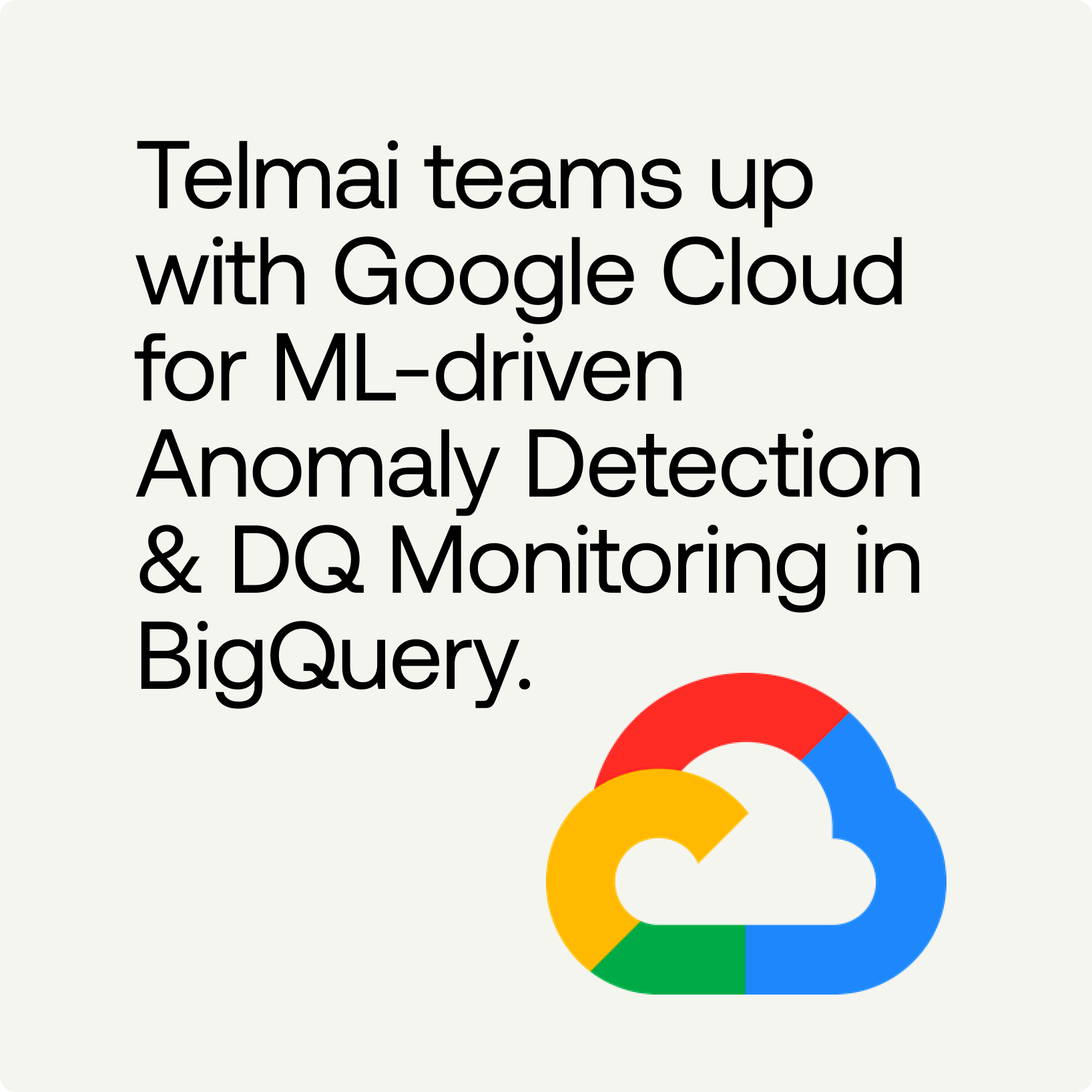Telmai partners with Google Cloud to bring ML-driven anomaly detection and data quality monitoring to BigQuery
Telmai has announced a strategic partnership with Google Cloud to enhance Data Observability and Quality Monitoring on BigQuery and Google Cloud Storage. This collaboration, which is built on product integrations, aims to address data quality issues that have become a significant hurdle for many, by enabling data teams to detect, investigate, and rectify these issues at scale using a low-code, no-code, and API-first platform.

Today, Telmai announced its partnership with Google Cloud to empower Data Observability and Quality Monitoring on BigQuery and Google Cloud Storage. This partnership is built on product integrations between Telmai and Google Cloud. It combines the speed and scale of Google Cloud BigQuery with the ML-driven anomaly detection and data quality monitoring of Telmai.
Integrations between Telmai and Google Cloud BigQuery enable data teams to detect, investigate, and remediate their data quality issues at scale and with a low-code, no-code, and API-first platform. Enterprises have growing amounts of data available to them and are constantly leveraging that data for data-driven decision-making and building data products. Today, data quality issues and the time to detect and remediate those issues have become a roadblock for many – a gap that Telmai is closing.
Today Telmai customers like DataStax and Clearbit use Telmai’s Data Observability to detect, investigate, and monitor their data in BigQuery and various other sources.
“We’re thrilled to be partnering with Google Cloud,” said Mona Rakibe, CEO and Co-Founder of Telmai. “This partnership will open up opportunities for GCP customers to accelerate their advanced analytics and machine learning initiatives without worrying about the reliability of underlying data.”
Companies that use Telmai can monitor the quality of their data in BigQuery in addition to various other data sources, analytic databases, semi-structured datasets, and event streaming sources. Telmai proactively detects and investigates anomalies and data drifts in real-time using ML.
“Trusted data is essential for decision-making and to power digital transformation,” said Manvinder Singh, Managing Director, Partnerships at Google Cloud. “We’re pleased that BigQuery and Google Cloud infrastructure will support Telmai’s solution, and help bring new capabilities and products to market from innovative, fast-growing organizations like Telmai.”
“Our customers deserve the best possible data to make their business grow,” said Harlow Ward, CTO, Clearbit. “Telmai’s Data Observability enables us to show the quality of the data that we are delivering to our customers. We use Telmai to monitor and quality check the data that is coming in, the data that goes through our proprietary algorithms, and the data we package for our customers. Telmai is in every step of our data pipeline including BigQuery to ensure that the data we deliver to our customers is credible and reliable.”
“To prepare data for product usage analysis, we needed data quality metrics beyond monitoring operational data pipelines and job status checks,” said Raghu Nadiger, Data & Analytics Leader, DataStax. “We chose Telmai to detect the quality and accuracy of the data in our BigQuery data warehouse. Telmai’s ML and no-code product makes it easy for us to monitor drifts in our data and get notifications of any gaps in real time.”
“Migrating to a modern cloud data warehouse has become more challenging than ever due to data’s increasing volumes and complexity,” said Darius Kemeklis, EVP & CTO, Myers-Holum. “However, with our consulting expertise and cutting-edge products like Telmai, we can efficiently migrate legacy systems to Google Cloud BigQuery while staying within our client’s time and budget. Telmai’s data profiling and anomaly detection enable pre-migration data quality assessment of legacy SQL or Hadoop environments. Telmai allows us to validate migrated data within Big Query and compare it to the source system data and value distribution, ensuring a successful migration. Telmai’s ongoing monitoring and observability of data assures long solution health.”
In partnership, Telmai and Google have jointly developed this video to showcase Telmai’s capabilities on Google Cloud.
To learn more about Telmai’s capabilities on BigQuery, visit Telmai’s integrations page.
To learn more, request a demo.
Passionate about data quality? Get expert insights and guides delivered straight to your inbox – click here to subscribe to our newsletter now.
- On this page
See what’s possible with Telmai
Request a demo to see the full power of Telmai’s data observability tool for yourself.